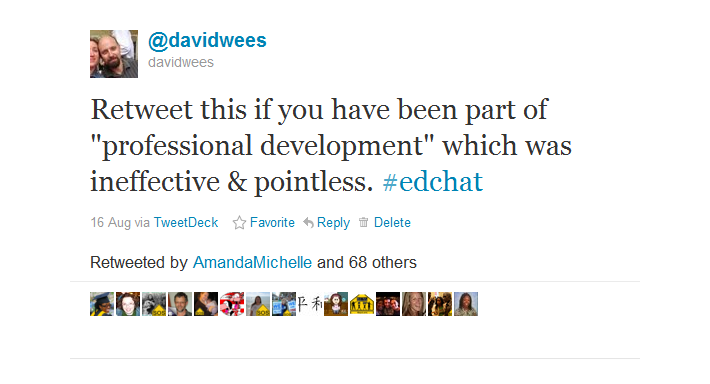I tweeted out the following yesterday during the #edchat discussion. So far 72 people have retweeted it (4 more since I took that screen-shot).
Every teacher is very likely to have been part of ineffective professional development at some point in their career, either as the organizer, the presenter, or the recipient of the professional development. Bad professional development, while fortunately not the norm, is very common.
I’ve been in professional development sessions were totally inappropriate for me as a math teacher, and sessions where I already knew everything that was being presented. I’ve presented sessions where I had participants literally falling asleep (although not recently!) and I’ve fallen asleep (nearly) in a presentation. I attended virtually the same algebra tiles session at least 3 times while working in NYC.
There are a few reasons I can think of why this happens.
- The professional development content is inappropriate for teachers because it is not at related to their practice.
- There is either expertise or a lack of expertise assumed of the participants by the presenter when presenting, which means the presentation is not developmentally appropriate.
- The style of the professional development doesn’t meet the teachers’ learning needs.
- The teachers have been coerced or forced into the professional development.
- The presenter does not develop a positive relationship with the teachers.
- There is little opportunity to interact with the material and discuss the ideas being presented.
- There is little to no follow up after the session.
- Much professional development lacks feedback for the teachers as to whether they have learned anything.
- The teachers in the session have personal problems or concerns which interfere with their ability to learn during the professional development.
(Do these reasons remind you of the reasons why students sometimes struggle with school?)
What can we do to ensure that we develop and participate in meaningful professional development? What can we do to convert professional development into professional learning?

